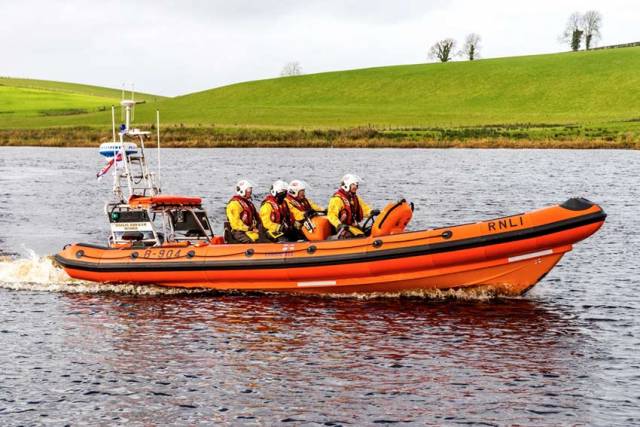#RNLI - Carrybridge RNLI’s new B-Class Atlantic 85 lifeboat Douglas, Euan & Kay Richards launched on its first callout yesterday afternoon (Wednesday 27 December 2017) along with the station’s rescue water craft.
The volunteer lifeboat crew based on Upper Lough Erne were requested to launch at 2.31pm following a report from Belfast Coastguard of two people in the water near the old boat house at Crom Estate after their Canadian canoes capsized.
Helmed by Thomas Graham with crew members David Reid and Kyle Boyd, the new lifeboat made its way to the scene along with the rescue water craft helmed by Chris Cathcart and crewed by Adrian Quigley.
Weather conditions at the time were overcast with Force 4-5 winds and fair visibility. The Northern Ireland Ambulance Service was also in attendance.
As the RNLI volunteers arrived on scene at Crom, a member of the public informed them that the man and woman who came off the canoes had managed to swim ashore with the assistance of two members of the public who had entered the water to assist them. The canoeists were suffering from signs of hypothermia and were being warmed in vehicles.
The RNLI crew secured their vessels and made their way to the casualties as members of the ambulance service arrived on scene. The two casualties were transferred to the ambulance with the assistance of the RNLI crew where they received casualty care treatment.
Speaking following the callout, Carrybridge RNLI helm Thomas Graham said: “The water is very cold at this time of year and the casualties had been in the lough for about five minutes after coming out of their canoes and making their way back to the shore. Thankfully they made it safety ashore and received treatment.
“We would recommend if going afloat in this time of year in any canoe, that lifejackets and drysuits are worn to help protect against the cold waters, and that people also carry a means of communication such as a VHF radio or mobile phone to raise the alert should they get into any difficulties.”
The Douglas, Euan & Kay Richards went on service early last month, replacing Duckhams 2001 which has been used to rescue people on Lough Erne in County Fermanagh since 2015.































































